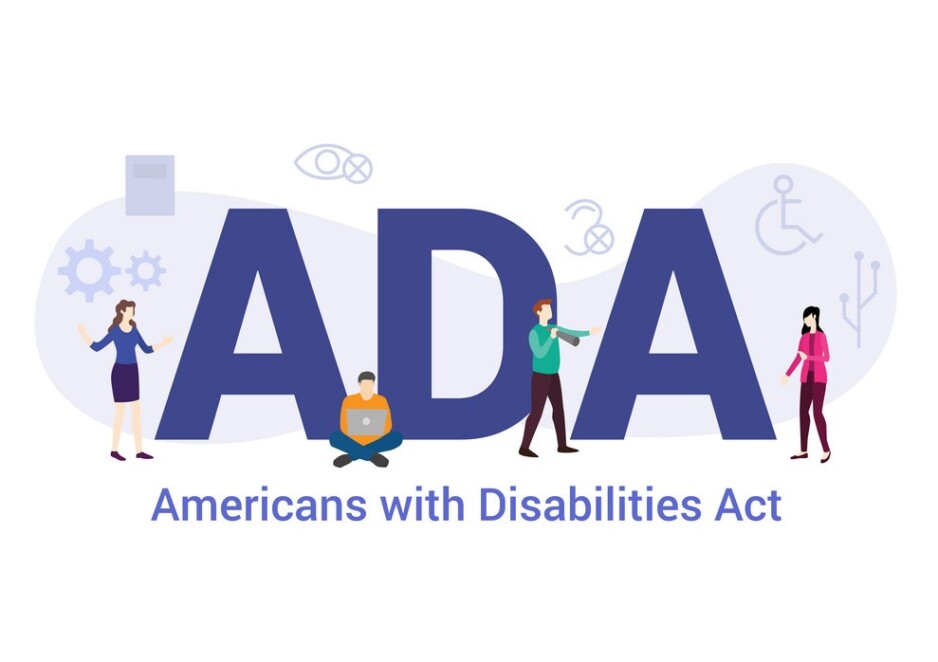I. Introduction to ADA Day
What is ADA Day?
ADA Day, also known as the American Disability Act Day, is an annual observance held on July 26th to celebrate the signing of the Americans with Disabilities Act (ADA) into law. The ADA is a landmark civil rights law enacted in 1990 that prohibits discrimination against individuals with disabilities in all areas of public life, including employment, transportation, and public accommodations.
Significance of ADA Day
ADA Day is an opportunity to raise awareness about the rights of individuals with disabilities and promote inclusion and accessibility in society. It is a day to celebrate the progress made in ensuring equal opportunities for people with disabilities and to recognize the ongoing work to eliminate barriers and improve accessibility for all. ADA Day also serves as a reminder of the importance of advocating for the rights and needs of individuals with disabilities.
II. History of the Americans with Disabilities Act (ADA)
Background and purpose of the ADA
The Americans with Disabilities Act (ADA) is a landmark legislation that was signed into law on July 26, 1990, by President George H.W. Bush. Its purpose is to prohibit discrimination against individuals with disabilities and ensure equal opportunity in employment, public accommodations, transportation, and other areas of life. The ADA aims to dismantle barriers and provide reasonable accommodations to enable individuals with disabilities to fully participate in society.
Key milestones leading to the ADA
The journey towards the enactment of the ADA involved several significant milestones:
- Rehabilitation Act of 1973: This act was the precursor to the ADA and marked the first major federal legislation to prevent discrimination against individuals with disabilities. It provided protection for disabled individuals in programs receiving federal funding.
- Section 504: In 1977, Section 504 of the Rehabilitation Act was passed, further reinforcing the rights of disabled individuals and prohibiting discrimination in federally funded programs.
- Capitol Crawl: On March 12, 1990, disability activists staged a powerful protest known as the Capitol Crawl. Demonstrators with disabilities left their mobility aids behind and crawled up the steps of the U.S. Capitol Building, demanding the passage of the ADA.
- Passage of the ADA: Following the Capitol Crawl and years of advocacy, the ADA was finally signed into law on July 26, 1990. It was a monumental achievement for disability rights and marked a significant step towards achieving equality and inclusion for individuals with disabilities.
The ADA has had a profound impact on improving accessibility and inclusivity for people with disabilities in the United States. It continues to shape policies and advance the rights of disabled individuals, promoting a more equitable and inclusive society.
III. Rights and Protections under the ADA
The American with Disabilities Act (ADA) provides comprehensive rights and protections for individuals with disabilities in various aspects of life. The ADA is divided into five titles, each addressing different areas of concern. These titles include:
Overview of ADA Title I: Employment
Title I of the ADA prohibits discrimination against qualified individuals with disabilities in all aspects of employment, including hiring, promotion, and termination.
Overview of ADA Title II: State and Local Government
Title II prohibits disability-based discrimination in public services and programs provided by state and local governments, such as transportation, public facilities, and services.
Overview of ADA Title III: Public Accommodations
Title III addresses accessibility requirements for public accommodations, including restaurants, hotels, theaters, and retail stores. It ensures that individuals with disabilities have equal access to these establishments.
Overview of ADA Title IV: Telecommunications
Title IV requires telephone and telecommunications companies to provide relay services for individuals with hearing and speech disabilities, allowing them to communicate effectively through telecommunications devices.
Overview of ADA Title V: Miscellaneous Provisions
Title V contains various provisions, including technical assistance and enforcement mechanisms to ensure compliance with the ADA across different sectors.
The ADA has significantly improved the lives of individuals with disabilities, providing legal protections and promoting accessibility and inclusivity in society. To learn more about the ADA and its various titles, please visit the official ADA website.
IV. Impact and Achievements of the ADA
The American Disability Act (ADA) has had a significant impact on the lives of individuals with disabilities since its enactment. Here are some key achievements of the ADA:
Employment opportunities for individuals with disabilities
The ADA has played a crucial role in ensuring equal employment opportunities for individuals with disabilities. It prohibits discrimination against qualified individuals with disabilities in all aspects of employment, including hiring, promotion, and job termination.
Accessibility improvements in public spaces and transportation
The ADA has led to significant improvements in accessibility for individuals with disabilities in public spaces and transportation. It requires public entities and businesses to make reasonable accommodations to ensure accessibility to their facilities and services for individuals with disabilities. This includes installing ramps, elevators, and accessible restrooms, as well as providing accessible transportation options.
Promoting inclusivity and equal rights
One of the primary goals of the ADA is to promote inclusivity and ensure equal rights for individuals with disabilities. It prohibits discrimination in various areas of public life, including education, housing, public accommodations, and telecommunications. The ADA has helped raise awareness about the rights and needs of individuals with disabilities, promoting a more inclusive and accessible society.
The ADA has had a profound impact on improving the lives of individuals with disabilities, promoting inclusivity, and ensuring equal rights for all.
V. Challenges and ongoing work
Areas for improvement in ADA implementation
While the ADA has made significant progress in improving accessibility for individuals with disabilities, there are still areas that require further attention and improvement. Some of the challenges include:
- Physical Accessibility: Many older buildings and public spaces still lack adequate accessibility features, such as ramps and elevators, making it difficult for individuals with mobility impairments to navigate.
- Accessible Transportation: Accessible public transportation remains a challenge in many areas, with limited options for individuals with disabilities.
- Employment Opportunities: Despite legal protections, individuals with disabilities still face barriers to employment and often experience higher rates of unemployment or underemployment.
- Education: Access to inclusive and accessible education is vital, but there are still gaps in providing necessary accommodations and support for students with disabilities.
Addressing modern issues and emerging technologies
As technology continues to evolve, new challenges and opportunities arise in ensuring accessibility for individuals with disabilities. Some modern issues that need to be addressed include:
- Website Accessibility: With the increasing reliance on the internet and online services, it is crucial to ensure that websites and digital platforms are accessible to individuals with disabilities.
- Mobile Applications: As mobile applications become more prevalent, it is essential to consider accessibility features and standards during the development process to ensure equal access to information and services.
- Digital Content: Digital content, including videos, documents, and multimedia, should be accessible by providing captions, transcripts, and alternative formats to individuals with disabilities.
- Emerging Technologies: With the advancement of technologies like virtual reality, augmented reality, and artificial intelligence, it is essential to ensure that these technologies are inclusive and accessible to individuals with disabilities.
The ADA continues to evolve and adapt to address these modern issues and emerging technologies. Ongoing work is being done to promote accessibility, raise awareness, and foster a more inclusive society for individuals with disabilities.
VII. Conclusion
Looking back at the progress made under the ADA
The American with Disabilities Act (ADA) has played a crucial role in improving the lives of individuals with disabilities. It has increased accessibility, promoted equality, and raised awareness about disability rights. Since its enactment, significant progress has been made in areas such as accessible infrastructure, inclusive education, and employment opportunities.
The importance of continued advocacy for disability rights.
Despite the advancements brought about by the ADA, there is still work to be done. Continued advocacy is essential to address ongoing challenges and ensure the full inclusion and equal rights of individuals with disabilities. This includes promoting accessible technology, strengthening disability employment initiatives, and fostering inclusive communities. By working together, we can continue to build a more inclusive and equitable society for all.

